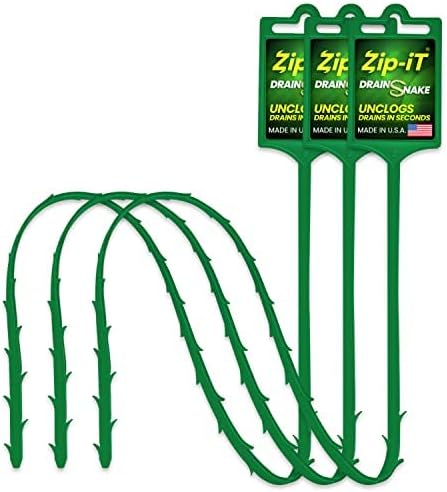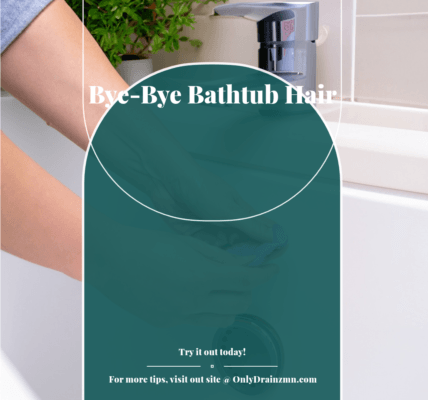Introduction to Bathtub Clogs: Causes and Consequences

Understanding Common Causes of Bathtub Clogs
Bathtub clogs are a frequent household issue, and understanding their causes can help prevent future occurrences. Here are the most common culprits:
- Hair
- Description: Hair is the number one cause of bathtub clogs. As we bathe, we shed hair which, over time, accumulates in the drain.
- Mechanism: Hair can knot and tangle, creating a dense mat that traps soap scum, dirt, and other debris, eventually forming a solid blockage.
- Prevention: Using a drain hair catcher can significantly reduce the amount of hair that goes down the drain.
- Soap Scum
- Description: Soap scum is a filmy residue created when soap mixes with hard water. It often contains fats and other additives.
- Mechanism: Over time, soap scum can cling to the sides of pipes and combine with hair and other particles, forming a thick, sticky obstruction.
- Prevention: Regularly cleaning the bathtub and using liquid soap instead of bar soap can help minimize soap scum buildup.
- Dirt and Oils
- Description: Bathtubs often accumulate dirt, oil, and other residues from our bodies, clothing, and cleaning the tub or other objects.
- Mechanism: These substances can bind together with hair and soap scum, contributing to a blockage.
- Prevention: Rinsing off excess dirt and oil before taking a bath and regularly cleaning the tub can prevent these substances from causing clogs.
- Mineral Buildup
- Description: Hard water contains high levels of minerals like calcium and magnesium that can accumulate in pipes.
- Mechanism: Over time, these mineral deposits can narrow the pipe passage and reduce water flow, making it easier for other materials to cause a clog.
- Prevention: Installing a water softener can help reduce the amount of minerals in your water supply.
- Small Objects and Debris
- Description: Items like shampoo caps, razor covers, and small toys can accidentally get washed down the drain.
- Mechanism: These items can create a physical blockage or provide a catch point where hair and other debris can accumulate.
- Prevention: Using a drain cover can prevent non-water-soluble objects from entering the drain.
The Impact of Leaving a Clogged Bathtub Untreated
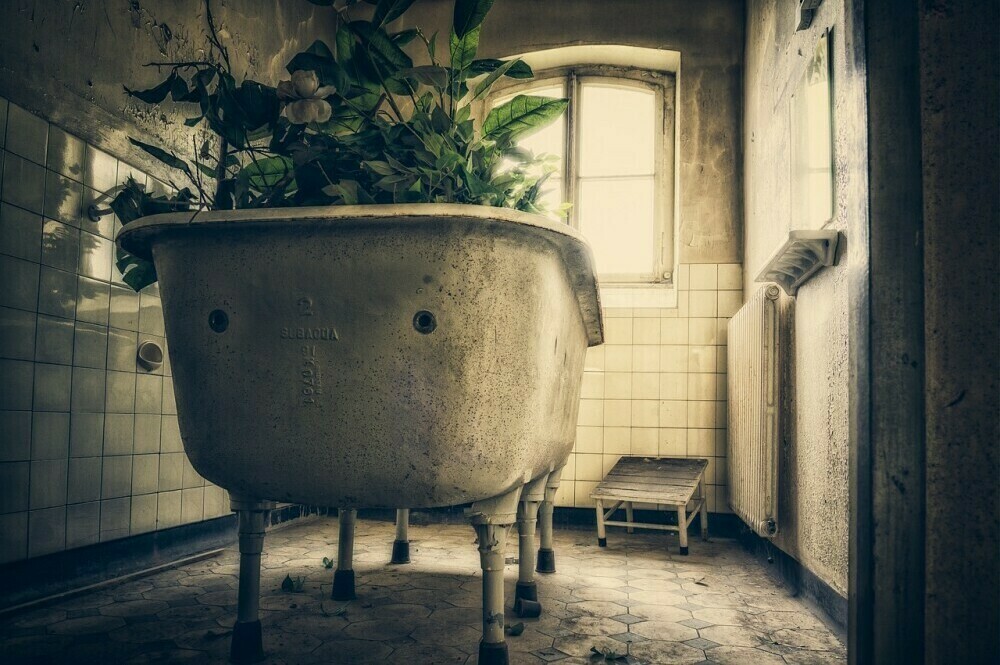
Ignoring a clogged bathtub can lead to various negative consequences that affect your household, finances, and health:
- Water Damage
- Overflow: A severely clogged drain can cause water to overflow from the bathtub, leading to water damage on floors and walls.
- Structural Damage: Persistent water exposure can weaken structural elements of your home, particularly wood, leading to costly repairs.
- Mold and Mildew Growth
- Damp Conditions: Standing water and damp areas created by clogs are ideal breeding grounds for mold and mildew.
- Health Risks: Mold spores can spread through the air, aggravating respiratory conditions such as asthma and allergies.
- Unpleasant Odors
- Bacterial Growth: Decomposing organic material trapped in the clog can produce foul-smelling gases.
- Living Environment: Persistent odors can make your bathroom and surrounding areas unpleasant to use.
- Reduced Bathtub Usability
- Limited Access: A clogged bathtub can render it unusable, causing inconvenience and limiting your ability to maintain personal hygiene efficiently.
- Inconvenience: This might force you to rely solely on other facilities, creating a bottleneck if you have a busy household.
- Escalating Repair Costs
- Worsening Conditions: Ignoring a clog can lead to more severe blockages over time, requiring professional intervention.
- Expensive Solutions: Simple clogs that could have been resolved with minor tools may escalate to needing power rodding or pipe replacement, both of which are substantially more expensive.
Highlighting the Importance of Addressing Bathtub Clogs Quickly
Acting promptly when you notice a clogged bathtub brings multiple benefits and mitigates potential issues:
- Preventing Water Damage
- Timely Action: Quickly clearing a clog ensures that water can flow freely, reducing the risk of overflow and water damage.
- Cost Savings: Avoiding water damage saves money on repairs for structural elements and personal belongings affected by water exposure.
- Maintaining Hygiene and Health
- Regular Use: Ensuring that your bathtub is always functional helps maintain personal hygiene standards.
- Health Protection: Promptly addressing clogs prevents the buildup of bacteria, mold, and mildew, protecting household members from potential health issues.
- Avoiding Unpleasant Experiences
- Fresh Environment: A clog-free bathtub maintains a pleasant atmosphere in your bathroom, free from foul odors.
- Reduced Stress: Addressing issues swiftly reduces the stress and inconvenience associated with having a non-functional bathtub.
- Cost Efficiency
- Minor Fixes: Handling clogs early usually results in minor repairs that are inexpensive.
- Preventive Maintenance: Regular maintenance can extend the longevity of your plumbing system, ensuring efficient operation and reducing the likelihood of significant blockages.
- Enhancing Drain Performance
- Efficient Drainage: Addressing clogs promptly ensures water drains quickly and efficiently.
- Reduced Wear and Tear: Regularly clearing minor clogs reduces the strain on your plumbing system, potentially extending its lifespan.
In summary, understanding the common causes of bathtub clogs, recognizing the consequences of leaving them untreated, and highlighting the importance of addressing them promptly can help maintain a well-functioning, hygienic, and pleasant home environment. Taking preventive measures and acting quickly when issues arise can save you from costly repairs and ensure your bathroom remains a comfortable and usable space for all household members.
Chemical Solutions: A Double-Edged Sword

Overview of Popular Chemical Drain Cleaners
Chemical drain cleaners are widely used to dissolve clogs in plumbing systems. Here’s an in-depth look at the types and some popular brands:
Types of Chemical Drain Cleaners
Caustic Drain Cleaners:
- Composition: These contain substances like lye (sodium hydroxide) or caustic potash (potassium hydroxide).
- Mechanism: They generate heat as they react with organic materials, breaking them down into a soluble form.
- Common Uses: Effective on grease, hair, and food particles.
Oxidizing Drain Cleaners:
- Composition: Contain substances like bleach (sodium hypochlorite), peroxides, or nitrates.
- Mechanism: The chemicals cause organic material to lose electrons and break down, producing gas and heat which facilitate the clearing of the clog.
- Common Uses: Effective on hair, food, and other organic clogs.
Acidic Drain Cleaners:
– Composition: Contain high concentrations of sulfuric acid or hydrochloric acid.
– Mechanism: They are extremely powerful and can dissolve tough clogs, including hair, grease, paper, and even some mineral deposits.
– Common Uses: Typically used by professionals because of their potency and potential danger.
- Popular Brands and Products
– Drano ;
- Product Range: Offers various products including Drano Max Gel, Drano Liquid Drain Cleaner, and Drano Dual-Force Foamer.
- Mechanism: Primarily uses caustic or oxidizing ingredients to break down clogs.
– Liquid-Plumr:
– Product Range: Products like Liquid-Plumr Pro-Strength Full Clog Destroyer and Liquid-Plumr Hair Clog Eliminator.
– Mechanism: Utilizes a combination of caustic and oxidizing chemicals to tackle tough clogs.
– RID-X:
– Product Range: Known for its septic tank treatment, it also offers drain maintenance solutions.
– Mechanism: Often uses enzymes and bacteria to break down organic matter gently over time.
– Green Gobbler:
– Product Range: Eco-friendly options like Green Gobbler Drain Clog Dissolver.
– Mechanism: Utilizes biodegradable ingredients to dissolve clogs while being environmentally conscious.
The Potential Hazards and Environmental Impact of Chemicals
Using chemical drain cleaners comes with several potential risks and environmental impacts that are important to understand:
Potential Hazards to Human Health
- Skin and Eye Irritation:
– Contact Risks: Chemical drain cleaners, especially caustic and acidic ones, can cause severe burns, redness, and pain if they come into contact with skin or eyes.
– Prevention: Always wear protective gloves and goggles when handling these products.
– Respiratory Problems:
– Fumes: Inhaling fumes from some chemical drain cleaners can cause respiratory irritation, coughing, and difficulty breathing.
– Prevention: Use in a well-ventilated area and avoid inhaling fumes directly.
– Accidental Ingestion:
– Toxicity: Accidental ingestion can cause severe internal injuries, including burns to the mouth, throat, esophagus, and stomach.
– Prevention: Keep these chemicals out of reach of children and pets, and clearly label them.
Impact on Plumbing Systems
– Pipe Damage:
– Corrosion: Over time, the strong chemicals in drain cleaners can corrode metal pipes and degrade plastic ones, leading to leaks or bursts.
– Prevention: Use these products sparingly and consider alternative methods for regular maintenance.
– Septic Tank Harm:
– Bacterial Disruption: Chemical cleaners can kill beneficial bacteria in septic systems, disrupting the natural waste breakdown process.
– Prevention: Use septic-safe products and avoid regular use of harsh chemicals if you rely on a septic system.
Environmental Impact
– Water Pollution:
– Chemical Runoff: Residual chemicals can make their way into local waterways, harming aquatic life and ecosystems.
– Prevention: Go for eco-friendly products and dispose of chemicals properly by following local regulations.
– Soil Contamination:
– Leaching: Toxic chemicals can leach into the soil, affecting plant life and potentially entering the food chain.
– Prevention: Reduce the use of hazardous chemicals and explore natural or mechanical alternatives for drain cleaning.
Precautions to Take When Using Chemical Solutions
When using chemical drain cleaners, following the proper precautions can protect you and your household from harm:
- Read and Follow Instructions Carefully
– Importance: Each product comes with specific instructions for safe use, dosage, and handling.
– Result: Following these can maximize effectiveness and minimize risk.
– Dosage:
– Risks: Overuse can exacerbate hazards without increasing effectiveness.
– Result: Use only the recommended amount.
- Protective Gear and Safety Measures
– Wear Safety Gear:
– Items: Use gloves, safety goggles, and even a face mask if fumes are strong.
– Result: This protects skin and eyes from splashes and minimizes inhalation risks.
– Ensure Proper Ventilation:
– Air Circulation: Open windows and doors, or use fans.
– Result: Proper ventilation disperses harmful fumes, reducing respiratory exposure.
3. Handling and Storage
– Safe Storage:
– Instructions: Keep chemicals in their original containers and store them in a cool, dry, and secure place.
– Result: Prevents accidents and unauthorized access by children or pets.
– Labeling:
– Best Practice: Clearly label all containers with their contents and hazards.
– Result: Helps prevent misuse or accidental combination with other chemicals.
4. Avoid Mixing Chemicals
– Combination Dangers:
– Risks: Mixing different chemical drain cleaners or combining with other household cleaners can produce toxic or explosive reactions, such as chlorine gas.
– Precaution: Use one product at a time and rinse the drain thoroughly between different treatments.
5. Emergency Preparedness
– First Aid Knowledge:
– Preparedness: Know basic first aid for chemical exposure, such as flushing eyes or skin with water.
– Result: This allows for immediate response in case of accidental contact.
– Emergency Contacts:
– Information: Have contact numbers for local poison control and emergency services readily available.
– Result: Quick access to these can save lives in case of severe exposure.
6. Environmental Considerations
– Disposal:
– Guidelines: Follow local regulations for disposing of chemical cleaners to avoid environmental harm.
– Result: Proper disposal prevents soil and water contamination.
– Alternative Solutions:
– Eco-Friendly Products: Consider using less harmful, biodegradable options whenever possible.
– Mechanical Methods: Regular maintenance, such as using plumbing snakes, can reduce reliance on chemicals.
In summary, while chemical drain cleaners can be effective for resolving clogs, they come with significant health and environmental risks. Using the right type of cleaner appropriately and taking necessary safety precautions can mitigate these hazards. Additionally, exploring environmentally friendly alternatives and maintaining good plumbing hygiene can minimize the need for harsh chemicals.
The Power of Enzymes: Eco-Friendly Unclogging
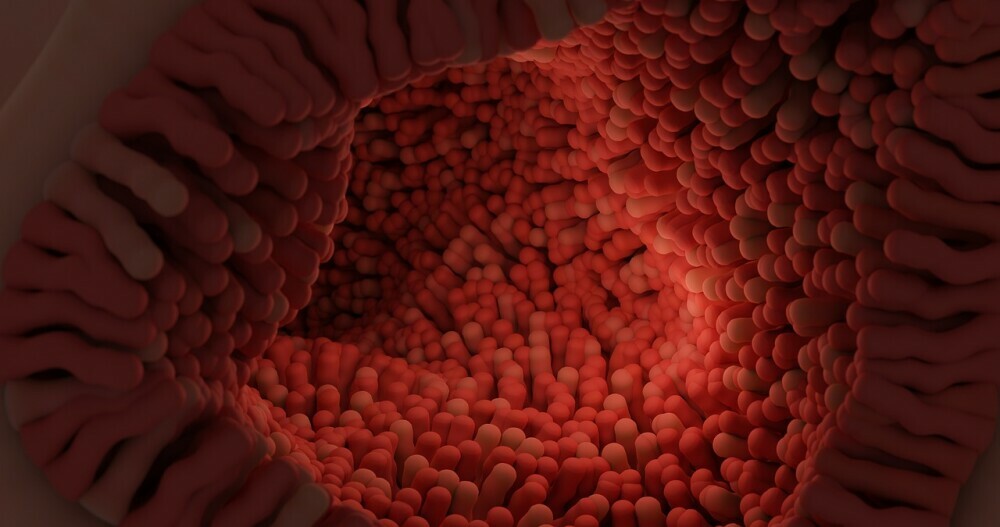
Explaining How Enzyme-Based Cleaners Work
Enzyme-based cleaners, also known as bio-cleaners, utilize the natural power of enzymes and beneficial bacterial strains to break down organic matter. These cleaners are designed to tackle a variety of cleaning tasks effectively while being eco-friendly.
What Are Enzymes?
Enzymes are biological catalysts produced by living organisms. These proteins accelerate chemical reactions without being consumed in the process. In enzyme-based cleaners, specific enzymes target and break down organic materials such as grease, food particles, hair, and more.
Mechanism of Action in Cleaners
- Identification and Targeting: Different enzymes target different types of organic matter. For example:
- Proteases break down proteins.
- Lipases break down fats and oils.
- Amylases break down starches.
- Cellulases break down cellulose (plant fibers).
- Enzyme Activation: When enzyme-based cleaners are applied to a surface or drain, the enzymes come into contact with their specific substrates (the substances they act upon). The enzymes then bind to these substrates.
- Catalysis: The enzymes facilitate the breakdown of the substrates into smaller, more manageable molecules. For instance, proteases break proteins down into amino acids, and lipases break fats into glycerol and fatty acids.
- Degradation and Removal: The reduced organic matter can then be easily washed away with water, leaving surfaces and drains clean.
The beneficial bacteria in these cleaners continue to digest organic residue, providing ongoing cleaning action.
Benefits of Using Enzyme-Based Products for Your Tub and the Environment
Using enzyme-based cleaners offers a variety of advantages for both home cleaning and environmental sustainability.
For Your Tub and Home
1. Effective Cleaning: Enzyme-based cleaners are highly effective at breaking down stubborn organic clogs in drains and leaving surfaces spotless. They can handle soap scum, hair, body oils, and other common residues found in bathtubs.
2. Non-Corrosive: Unlike harsh chemical cleaners that can damage plumbing and surfaces, enzyme-based cleaners are gentle and non-corrosive. This makes them safe for all types of plumbing systems, including PVC, metal pipes, and septic systems.
3. Odor Elimination: Enzymes break down the organic matter that causes bad odors. By eliminating the source of the smell, rather than masking it, these cleaners leave your bathroom smelling fresh.
4. Non-Toxic: These cleaners are non-toxic, making them safe to use around children and pets. They pose no risk of harmful fumes or skin irritations associated with chemical-based cleaners.
5. Ongoing Action: The beneficial bacteria present in these products can continue to digest organic material for hours or even days after initial application, providing a residual cleaning effect.
For the Environment
1. Biodegradable: Enzyme-based cleaners are biodegradable and break down naturally in the environment, reducing pollution and harm to ecosystems.
2. Reduced Chemical Use: Using enzyme-based cleaners reduces the reliance on harsh chemical cleaners that can be harmful to aquatic life and contribute to water pollution.
3. Sustainable: Many enzyme-based cleaners are made using sustainable practices and contain natural, renewable ingredients.
4. Septic System Friendly: These cleaners are beneficial to septic systems, helping to maintain a healthy balance of bacteria that break down waste and prevent system overload.
Recommended Enzyme Drain Cleaners on the Market There are several highly-rated enzyme drain cleaners available on the market. Here are some recommendations:
1. Bio-Clean:
– Description: A blend of natural bacteria and enzymes that digests dead organic waste found in your plumbing system.
– Benefits: Safe for all pipes, including PVC and metal. Effective in maintaining septic systems and eliminating foul odors.
2. Green Gobbler Drain Clog Dissolver:
– Description: A powerful, eco-friendly formula that utilizes enzymes to break down hair, grease, paper, soap scum, and organic matter.
– Benefits: Non-corrosive and safe for all types of drains. Simple to use with no harsh chemicals.
3. Earthworm Family-Safe Drain Cleaner:
– Description: Uses natural enzymes to break down and remove organic materials.
– Benefits: Pleasantly scented and safe for use around children and pets. Can be used regularly to prevent clogs.
4. Ecozone Enzymatic Drain Cleaning Sticks:
– Description: Sticks that release enzymes gradually to prevent clogs and keep drains flowing freely.
– Benefits: Easy to use. Simply drop a stick in the drain each month for continuous maintenance. Environmentally friendly and non-toxic.
5. Zep Drain Defence Enzyme Cleaner:
– Description: Utilizes advanced enzyme technology to clear and maintain drains.
– Benefits: Safe for all pipes and septic systems. Helps to prevent clogs from forming. Effective on buildup from hair, soap, and other organic materials.
6. Roebic K-570 Leach and Drain Field Opener:
– Description: Specifically designed to break down organic waste in septic systems and leach fields.
– Benefits: Enhances the performance of your septic system by promoting healthy bacterial activity. Safe and environmentally friendly.
When choosing an enzyme-based cleaner, it’s important to consider the specific needs of your plumbing system and any environmental concerns you may have. These products typically come with detailed instructions on how to use them effectively, ensuring optimal results.
Snaking Your Way Out: How to Use a Drain Snake
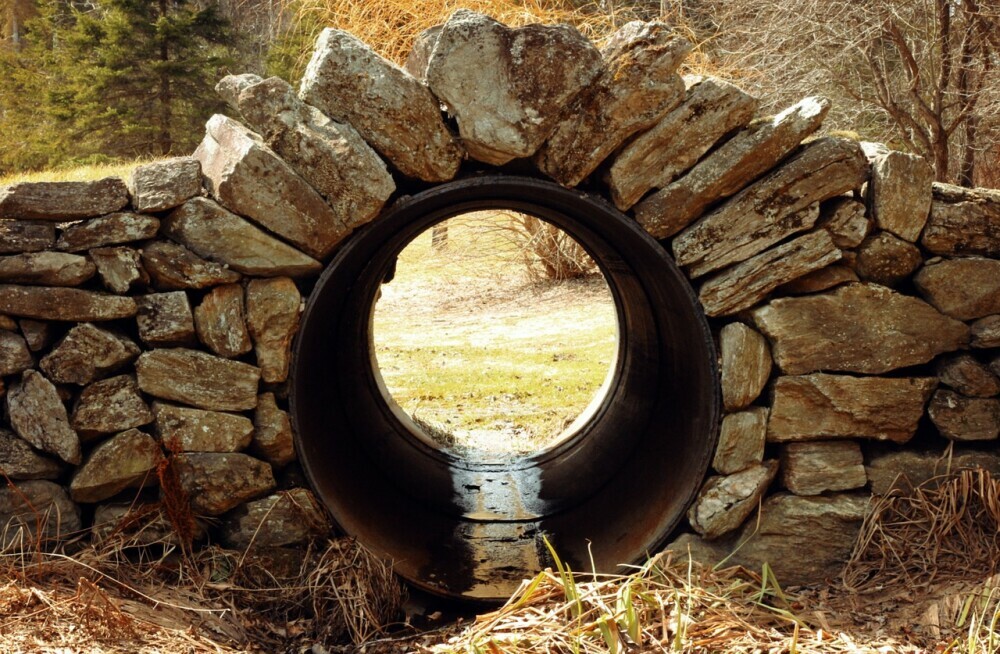
Let’s dive deeper into the world of drain snakes, how they work, how to use them to unclog a bathtub, and important safety guidelines and best practices.
Introduction to Drain Snakes and How They Function
What Is a Drain Snake?
A drain snake, also known as a plumber’s snake or drain auger, is a tool used to clear clogs in plumbing systems. It consists of a long, flexible metal cable with a coiled or spiral end that resembles a snake. This tool is designed to be inserted into the drain and maneuvered through the twists and turns of the pipe to reach and dislodge blockages.
Types of Drain Snakes
1. Handheld Drain Augers: These are manual tools that you operate by hand. They are perfect for minor clogs and are typically used in bathrooms and kitchens.
2. Power Augers: These are motorized versions of drain snakes that are more powerful and are used for tough clogs in larger pipes. They are commonly used by professional plumbers.
3. Toilet Augers: Specially designed with a protective rubber coating to avoid scratching the porcelain, these are specifically for unclogging toilets.
4. Mini Rooters: These are used for more severe blockages typically caused by tree roots infiltrating the sewer line.
How Do Drain Snakes Work?
1. Insertion: The snake is inserted into the drain and pushed deeper into the pipe.
2. Navigating through Pipe: The flexibility of the cable allows it to bend and navigate through the plumbing’s curves and turns.
3. Engaging the Clog: As the snake reaches the clog, the coiled end hooks onto or breaks apart the blockage.
4. Retrieval or Breaking Up: The snake can either hook and pull the blockage out or break it up into smaller pieces that can be flushed out with water.
When used correctly, drain snakes can effectively remove clogs without the need for harsh chemicals.
Detailed Instructions on Using a Drain Snake to Unclog a Bathtub
Tools and Materials
- – Drain snake (handheld auger is recommended for bathtubs)
- – Work gloves
- – Old towels or rags
- – Bucket
- – Pliers or screwdriver (if needed to remove the drain cover)
Step-by-Step Instructions
1. Preparation:
– Remove the Drain Cover: If your bathtub has a drain cover, use pliers or a screwdriver to remove it. This provides easier access to the drain.
– Put on Gloves: To protect your hands from grime and potential sharp edges.
2. Inserting the Drain Snake:
– Insert the Snake: Feed the end of the drain snake into the drain opening. Push it gently down the drain, turning the handle clockwise to help it navigate through the pipe.
– Continue Feeding: Keep pushing the cable further into the drain while simultaneously turning the handle. This helps the snake move through bends and curves in the plumbing.
3. Reaching and Engaging the Clog:
– Feel for Resistance: As you push the snake into the drain, you will feel resistance when it reaches the clog. This is your cue that you’ve found the blockage.
– Break Through the Clog: Continue to turn the handle, applying moderate pressure to either break up the clog or hook onto it with the snake’s coil. You may need to push and rotate back and forth a few times to effectively engage the clog.
4. Retrieving or Clearing the Clog:
– Pull Out the Snake: Once you believe the clog has been broken up or hooked, begin retracting the snake while continuing to turn the handle.
– Check the End: As you pull the snake out, check for debris on the coil end. If you’ve hooked the clog, it will come out attached to the snake.
– Dispose of Debris: Remove any debris from the end of the snake and place it into the bucket.
5. Testing and Cleanup:
– Flush the Drain: Run hot water down the drain to help clear away any residual debris and to test if the water is draining properly.
– Repeat If Necessary: If the water still drains slowly, you may need to repeat the process to ensure the entire clog is cleared.
– Clean Up: Wipe down the drain snake, reattach the drain cover, and clean the area where you worked.
Additional Tips:
– Remove the overflow plate and work through that opening if the clog is close by.
– If you encounter strong resistance and the snake doesn’t seem to advance any further, you might be dealing with a larger issue that could require professional attention.
Safety Guidelines and Best Practices When Handling a Drain Snake
1. Wear Protective Gear:
– Gloves: Always wear sturdy work gloves to protect your hands from grime, bacteria, and sharp edges on the snake or in the pipe.
– Eye Protection: Wear safety goggles to prevent debris from getting into your eyes.
2. Use Slow and Steady Movements:
– Avoid Jerking: Move the snake slowly and steadily. Sudden movements can cause the snake to twist or kink, which can damage your pipes or the tool itself.
– Be Gentle: Apply gentle pressure when encountering resistance to avoid damaging the pipes.
3. Proper Positioning:
– Stand Firmly: Make sure you have a stable stance to maintain control over the tool.
– Comfortable Grip: Hold the handle firmly but comfortably to maneuver the snake effectively.
4. Maintain the Tool:
– Clean After Use: After using the snake, clean it thoroughly to remove any debris or waste material. This prevents rust and keeps the tool in good working condition.
– Inspect for Damage: Regularly check the snake for any signs of wear or damage, such as kinks or rust, and replace it if necessary.
5. Know When to Stop:
– Professional Help: If you encounter a clog that you can’t seem to clear or if the snake gets stuck, it’s time to call a professional plumber. Forcing the tool may cause damage to your plumbing system.
6. Electrical Safety:
– Power Augers: If using a motorized snake, follow the manufacturer’s safety warnings. Ensure the tool is plugged into a grounded outlet, and avoid using it near water to prevent electrical shocks.
7. Proper Storage:
– Dry and Safe: Store the drain snake in a dry place to prevent rusting and corrosion. Coil the cable properly to avoid kinking.
Using a drain snake is a practical, cost-effective way to tackle minor to moderate clogs in your bathtub’s plumbing. By understanding how the tool works and following these detailed instructions and safety guidelines, you can successfully and safely unclog your drains. Feel free to ask if you have further questions or need more information!
Preventative Measures: Keeping Your Bathtub Clog-Free

Implementing Daily Habits to Prevent Future Clogs
Preventing clogs in your plumbing system is easier and more cost-effective than dealing with them after they occur. By incorporating some simple daily habits into your routine, you can keep your drains clear and functioning smoothly.
1. Mindful Disposal Practices:
– In the Kitchen:
– Avoid Grease and Oil: Never pour cooking oil, grease, or fat down the drain. These substances can solidify and cause blockages. Instead, collect them in a container and dispose of it in the trash.
– Food Scraps: Use a strainer in your sink to catch food particles, and dispose of them in the trash or compost bin.
– In the Bathroom:
– Hair Management: After showering, collect any hair that has accumulated around the drain and dispose of it in the trash. This prevents hair from going down the drain and causing clogs.
– Toiletries: Avoid flushing items like wet wipes, cotton swabs, sanitary products, and dental floss down the toilet. These items don’t break down easily and can cause serious blockages.
2. Hot Water Rinse
– Daily Hot Water Flush: Run hot water down the sink after washing dishes or using the drain in the bathroom. The hot water helps dissolve any buildups of soap, grease, or other residues before they become problematic.
3. Drain Cleaning Recipes
– DIY Solution: Once a week, flush your drains with a homemade solution:
– For Sink Drains: Mix equal parts baking soda and white vinegar (about 1/2 cup each). Pour the baking soda into the drain, followed by the vinegar. This creates a fizzy reaction that can help clean the pipes. Let it sit for about 15 minutes, then flush with boiling water.
– For Bathtub Drains: Mix 1/2 cup of baking soda with 1/4 cup of table salt and 1 cup of white vinegar. Pour the mixture down the drain and let it sit for 15-30 minutes. Flush with hot water.
4. Mindful Shower Products:
– Avoid Oily Products: Hair conditioners, bath oils, and certain soaps can contribute to clog formation. Choose products that do not leave heavy residues.
5. Brushing Hair Before Showering:
– Pre-Shower Routine: Brushing your hair before showering can significantly reduce the amount of loose hair that ends up in the drain.
Products Such as Drain Protectors and Hair Catchers
Using physical barriers like drain protectors and hair catchers can be highly effective in preventing clogs by stopping debris before it enters your pipes.
1. Types of Drain Protectors:
– Sink Strainers: These are mesh or perforated covers that sit over or fit into the sink drain. They catch food particles, preventing them from going down the drain.
– Materials: Stainless steel, silicone, and plastic are common materials. Stainless steel is durable and resistant to rust.
– Self-Cleaning: Some modern sink strainers are designed to be self-cleaning, reducing the effort required to maintain them.
– Bathtub and Shower Drain Covers: Specially designed to capture hair, soap chips, and other debris that can cause clogs.
– Designs: Options include standard flat mesh covers, mushroom-shaped plugs, and even decorative designs.
– Ease of Use: Choose ones that are easy to remove and clean regularly.
2. Hair Catchers
– Shower Hair Catchers: Installed over or in the drain, these devices catch hair before it can clog the drain.
– Silicone Models: Flexible and fit various drain sizes. They are easy to install and remove for cleaning.
– Metal Models: More durable and often have a long-lasting finish to resist corrosion.
3. Installation Tips
– Fitting: Ensure the drain protector or hair catcher fits snugly into or over the drain to prevent debris from slipping around it.
– Maintenance: Clean these items regularly to maintain their effectiveness. Rinse off collected debris and let them dry completely to avoid mold and mildew growth.
Regular Maintenance Routines for Long-Term Drainage Health
Preventative maintenance is key to avoiding major plumbing issues in the future. By developing a routine maintenance schedule, you can keep your drains functioning efficiently.
1. Monthly Maintenance
– Enzyme Cleaners: Use enzyme-based drain cleaners monthly. Unlike chemical cleaners, enzyme cleaners are safe for your pipes and the environment. They work by breaking down organic materials that often cause clogs.
– Usage: Follow the manufacturer’s instructions for the best results. Typically, you pour the cleaner down the drain and let it sit overnight.
– Hot Water Flushes: Perform a thorough hot water flush once a month. Boil a pot of water and slowly pour it down each drain. This helps dissolve and wash away any accumulated gunk.
2. Seasonal Checks
– Inspection: Every few months, inspect your drains, especially in areas that are prone to clogs like the kitchen and bathroom. Use a flashlight to look for any signs of slow drainage, standing water, or unpleasant odors, which can indicate a developing clog.
– Trap Cleaning: Clean the traps under your sinks periodically. This can be done by placing a bucket under the U-shaped pipe (trap), unscrewing it, and removing any debris. Rinse the trap thoroughly before reassembling.
– Outdoor Drains: Check and clean outdoor drains and downspouts to ensure they are free from leaves, debris, and other blockages.
3. Annual Professional Maintenance
– Professional Inspection: Hire a professional plumber for an annual inspection. They will use specialized tools, such as a drain camera, to inspect the inside of your pipes and identify potential issues.
– Hydro Jetting: Consider professional hydro jetting once a year. This process involves a plumber using high-pressure water jets to clean the inside of your pipes thoroughly.
4. Additional Maintenance Tips:
– Pipe Insulation: In colder climates, insulate your pipes to prevent freezing and cracking during winter. Frozen pipes often lead to cracks and clogs when they thaw.
– Proper Ventilation: Ensure your plumbing system is well-ventilated. Poor ventilation can cause slow drainage and increase the likelihood of blockages.
– Water Pressure Regulation: Maintain proper water pressure. High water pressure can damage pipes over time, leading to leaks and clogs. Use a water pressure gauge to monitor and adjust if necessary.
By consistently implementing these daily habits, employing effective protective products, and adhering to a regular maintenance schedule, you can significantly reduce the occurrence of clogs and maintain the health of your drainage system for years to come.

